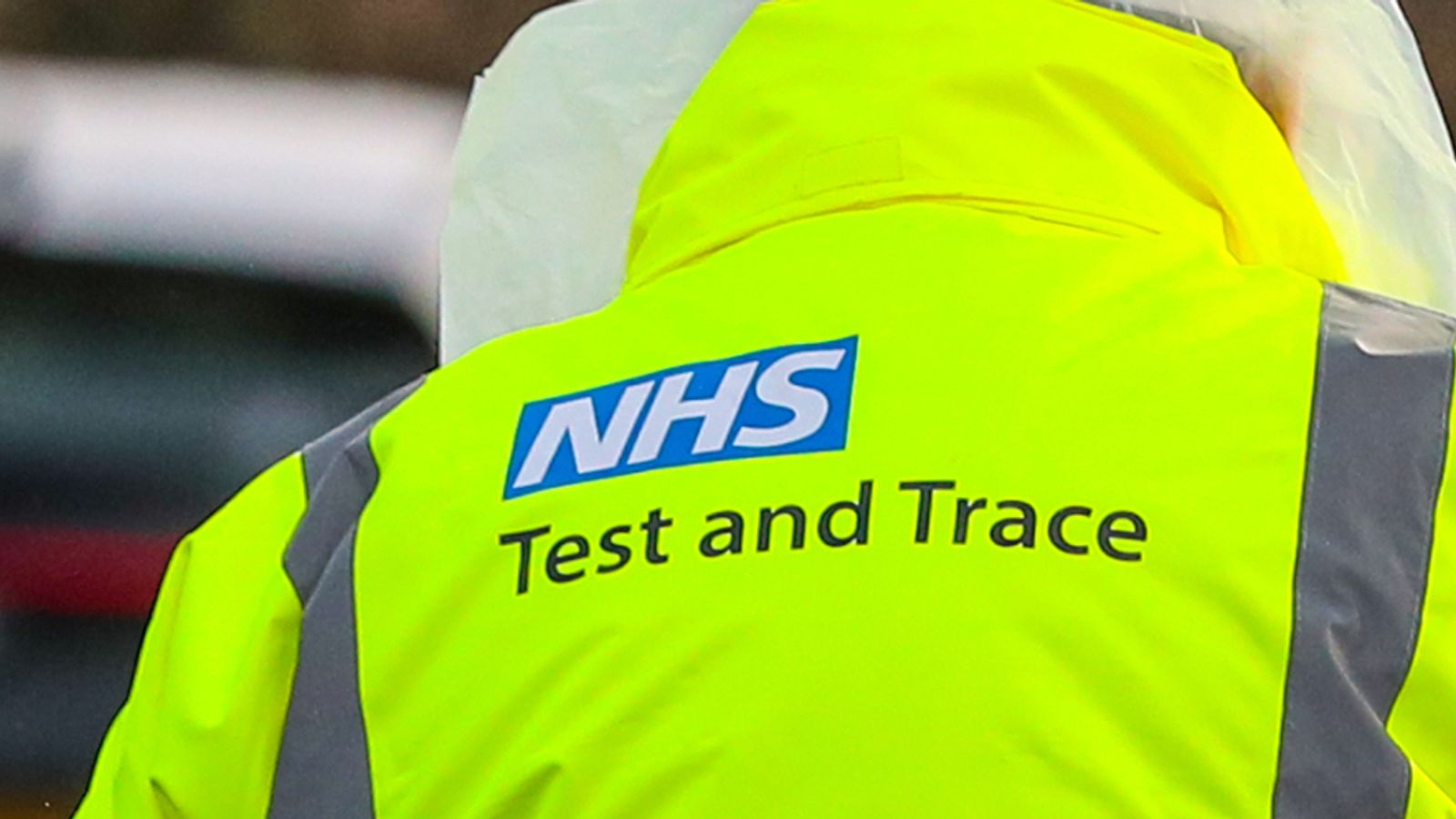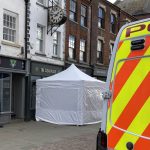Test and Trace is taking a beating. Again.
The latest to take a turn: the Public Accounts Committee, which has issued a report on the controversial service.
The cross-party committee of MPs found that despite having access to “unimaginable resources”, Test and Trace could not produce “clear evidence” it had reduced the spread of the virus.
Live COVID updates from UK and around world
The news provoked outrage on social media, where Test and Trace is always a popular whipping boy.
Lord Macpherson, who until 2015 was the most senior official at the Treasury, called it “the most wasteful and inept public spending programme of all time”. The shadow minister for schools, said £37 billion – the budget allocated to Test and Trace – had been flushed “down the toilet.”
Unpicking these accusations is not straightforward.
Yes, judged by its central mission of preventing lockdowns, Test and Trace failed not once, but twice. On the other hand, so did almost every contact tracing system in Europe.
Even Germany, one of the few success stories of the first wave, went into lockdown over Christmas.
A fair assessment of Test and Trace has to acknowledge that, in this part of the world, it was easier to fail than to succeed.
What’s more, as the committee of MPs pointed out, there were many factors that led the UK down the path to lockdown.
They could not say definitively that Test and Trace had an effect, but at the same time they could not say for sure that it hadn’t. More data was needed, they concluded. When is it not?
One area it definitely is: the vexed question of Test and Trace’s finances.
Last week in the budget, Rishi Sunak gave the service an extra £15bn, taking its total funding to an eye-watering £37bn over two years.
That is equivalent to the money spent on the UK’s entire public safety operation, including prisons, police and courts.
It is three times the amount spent on roads in England each year.
As Alex Thomas, the former senior civil servant who provided those comparisons, told me: “It is a vast sum.”
But although this money is available, not all of it has been spent. At the end of October, the last date for which figures are available, Test and Trace had spent £5.8bn, mostly on testing.
Far from being profligate, it had actually underspent its allocated funds, something Mr Thomas told me was common in the civil service.
“The culture of civil service is that you get in more trouble overspending than underspending, for obvious reasons,” he said.
“There’s a pretty high chance that a lot of that money won’t get spent.”
Speaking last night, Dido Harding insisted its cost was still “an awful lot less than £37bn”.
Yet although she dismissed the committee’s report as “old news”, she would not give up-to-date figures for Test and Trace’s spending.
This is one area where opacity is adding to public confusion. A bit of transparency might help everyone.
Not just because it would clarify persistent rumours, but because plans are being hatched right now to spend those remaining billions. If they are as ambitious as I am told they are, then they could benefit from some public scrutiny.
That is how mistakes are averted – and Test and Trace has had its fair share of mistakes.
Just last week, I discovered that Test and Trace barely used data from check-ins at pubs, restaurants and hairdressers for contact tracing, nor did it use data from hundreds of millions of check-ins with the contact tracing app
Before that, there was the revelation that, due to a technical omission, people who were told to self-isolate by the contact tracing app couldn’t claim the government’s financial support payment?
And who can forget the day in October when more than 15,000 cases were “lost” because they were lopped off the end of a spreadsheet?
Yet although Test and Trace bears ultimate responsibility for these errors, it’s not fair to pin the blame on it entirely.
What these episodes have in common is that information and communication falls between the cracks of the different organisations charged with protecting public health.
The check-in data was meant to be used by local public health protection teams, under the guidance of Test and Trace.
The app payment was meant to be arranged by the Department of Health and Social Care, then delivered by Test and Trace.
The spreadsheet was created by Public Health England, then sent to Test and Trace.
So often during the pandemic, it has been these fault lines that have been the problem: most notably between the work of testing and tracing and the work of supporting people to isolate.
The inability to connect these two crucial elements has been at the heart of so many of the UK’s struggles.
Many would argue that setting up an entirely new centralised organisation in the middle of a pandemic made this kind of fracture was inevitable.
Now that is done, the task is to ensure this kind of dysfunction is not repeated in the event of another crisis.
For this reason, one of the deepest cuts made by the Public Accounts Committee was about Test and Trace’s use of consultancies: Not just because of their average daily rate of around £1,100, but because they are likely to take their knowledge and experience with them once the crisis is over, leaving the UK without a legacy from its spending.
The committee challenged Test and Trace to lay out “how it will work with the NHS, public health and local government bodies to secure continued benefit from the assets and infrastructure it has created.”
If that is not achieved, then the words “flushing” and “toilet” will be used again – this time with some justification.






















